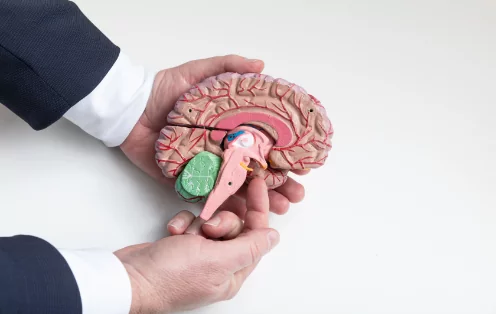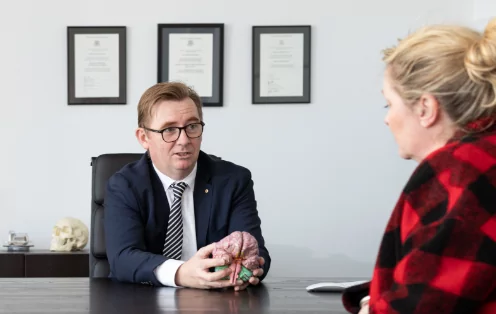


Initial management will depend on the patient’s symptoms. Patients with evidence of oedema and/or raised intracranial pressure are normally administered a steroid called dexamethasone. This is normally continued through any surgery and then slowly weaned after surgery. It may also be used during radiotherapy.
Most tumours, depending on their location, will be managed by surgical resection. Surgical resection is normally performed using a craniotomy. The surgery is assisted by the use of an image guidance system that uses stereotaxy to guide the surgery allowing a smaller incision and craniotomy to be performed and guiding the surgeon to the lesion. A craniotomy is a surgical opening in the skull to allow access to the tumour. The bone is then replaced at the end of the operation and secured to the surrounding skull using small titanium plates. Various types of craniotomies can be performed depending on the location and size of the tumour.
To learn more about craniotomy click on the following link:
Depending on the histological diagnosis, further treatment may be indicated. For a GBM, surgery is normally followed a few weeks later by radiotherapy and a tablet form of chemotherapy called temozolomide. The radiotherapy is delivered on a daily basis over a 6-week period. These doses are called fractions. Normally 30 fractions are delivered over the 6-week period with the patient also taking temozolomide. The temozolomide is normally also continued for 1 week per month during the 6 months following radiotherapy.
Patients having undergone treatment for a brain tumour are also monitored using MRI scans after surgery. Apart from the standard 6-week post-operative visit with Prof Owler, the patient is also monitored by the oncologists providing treatment. Following radiotherapy, MRI scans are normally performed every 3 months. Shortly after the MRI scan the patient and their scans are reviewed by Prof Owler.
This treatment paradigm is based on standard treatment of GBM which is the most common adult brain tumour. However, there are numerous other tumours which to which this treatment may not apply. The treatment is always tailored to the individual patients and their needs.
